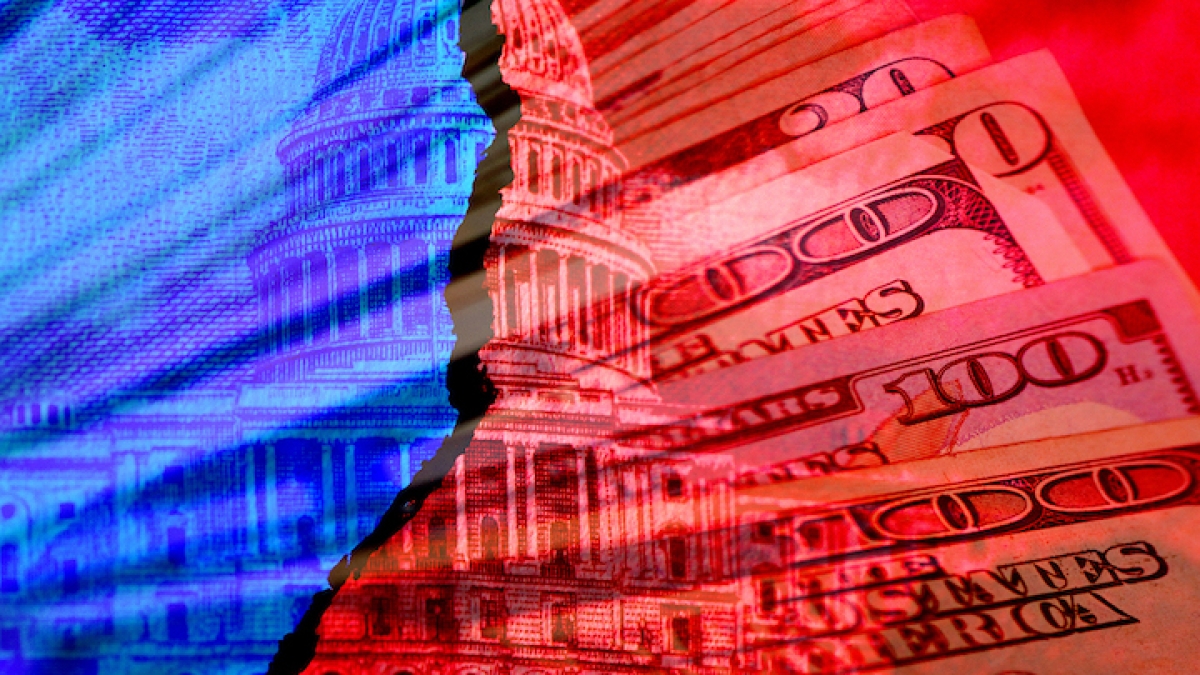Since 1960, Congress has raised the ceiling 78 times to extend or revise our nation’s debt.
The fight is on again, this time on President Joe Biden’s doorstep. For the past few weeks, he’s been jousting with top lawmakers, who are pushing for various reforms and spending cuts before they approve raising the debt ceiling again.
The nation’s government debt of $31.4 trillion will have to be raised for the 79th time to avoid default. Republican and Democrat leaders both acknowledge they are nowhere near striking a deal, even postponing talks on May 12 to the following week, such is the gap in their negotiations.
In addition to the amount of debt to agree on, the two sides must also decide how long to push out the next debt ceiling decision. Biden and Democrats are looking for a two-year window, so it won’t impact the 2024 election, while Republicans are negotiating for more significant spending cuts and caps from their colleagues.
Sound complicated? It isn’t, said an Arizona State University economist. He said it is more political theater than real-life drama.
Dennis Hoffman, director of the L. William Seidman Research Institute at the W. P. Carey School of Business and director of ASU's Office of the University Economist, provided a few answers for ASU News as the two sides continue to negotiate.
Note: Answers have been lightly edited for length and clarity.
Dennis L. Hoffman
Question: What is government debt? How does it differ from personal/household debt?
Answer: It represents financial obligations made by the government on behalf of U.S. taxpayers. Household debt is the obligation of individual households.
Q: Congress seems to have this debate every couple of years and has voted to increase the debt limit 78 times in its history. What is different this time?
A: People in the opposition party often choose to make political theater out of this exercise.
Q: What is the difference between a debt default and a government shutdown?
A: It’s apples and oranges. Actual default sends the message to creditors, and the debt of the United States government is no longer secured, or at least it is at risk of no payment. A government shutdown means that some recipients of government payments will no longer receive them, and many government workers and businesses working for the government won’t get paid. This has long-term implications for credit ratings and the cost of borrowing.
Q: Are there economically viable paths toward avoiding a debt limit increase?
A: Not in the short run, but in the long run, the limit increases could be slowed. This language is from the U.S. Treasury website: “Congress has always acted when called upon to raise the debt limit. Since 1960, Congress has acted 78 separate times to permanently raise, temporarily extend or revise the definition of the debt limit — 49 times under Republican presidents and 29 times under Democratic presidents. Congressional leaders in both parties have recognized that this is necessary."
Q: Anything else you want to add to this discussion?
A: Few people talk about the U.S. debt in a historical context. Looking back to the nation's founding, the pace of borrowing and hence accelerated debt accumulation tended to increase during times of stress, including wars and economic depressions. You can see spikes in the debt-to-GDP ratio dating back to the War of 1812. During more tranquil times, the debt-to-GDP ratio fell. Why? Because historically, in normal times, the pace of deficits (spending exceeding taxes) was slower than the pace of overall economic expansion.
The debt-to-GDP ratio can fall if the economy grows faster than the pace of debt accumulation. During these episodes, the times debt limits need to be increased can slow.
More recently, the pace of debt accumulation has accelerated. Since 1980 or so, we have lost our political will to do what’s necessary to reduce the pace of debt accumulation. Since 1980, tax collections, and taxes in general, have been demonized. When we fight a war — let’s say the war in Iraq, the war on terror — no new taxes are imposed, nor existing programs are cut to pay for it. When Medicare is expanded, no new taxes are imposed to pay for it, and no new current programs are eliminated. When we pay out massive pandemic subsidies, no new taxes are imposed nor programs to pay for it.
So, if there is no political will to manage the government’s fiscal situation over time, we will repeatedly have debt ceiling debates. This is a purely political problem with significant potential economic consequences.
Top photo illustration courtesy of iStock/Getty images
More Business and entrepreneurship

Thunderbird at ASU, W. P. Carey School team up on concurrent master's degrees
Students are now able to take advantage of two world-class schools at Arizona State University, at the same time. The Thunderbird School of Global Management and W. P. Carey School of Business…

ASU alum's personalized greeting card kiosk debuts on Tempe campus
Everyone knows how disheartening it is to dash into a store to grab a last-minute holiday card and find the selection picked over and in disarray.An Arizona State University alumna has created a…

Celebrating industry giants and distinguished alumni
Four outstanding alumni and two industry leaders will be honored at the School of Sustainable Engineering and the Built Environment’s Hall of Fame and Academy of Distinguished Alumni event, scheduled…

